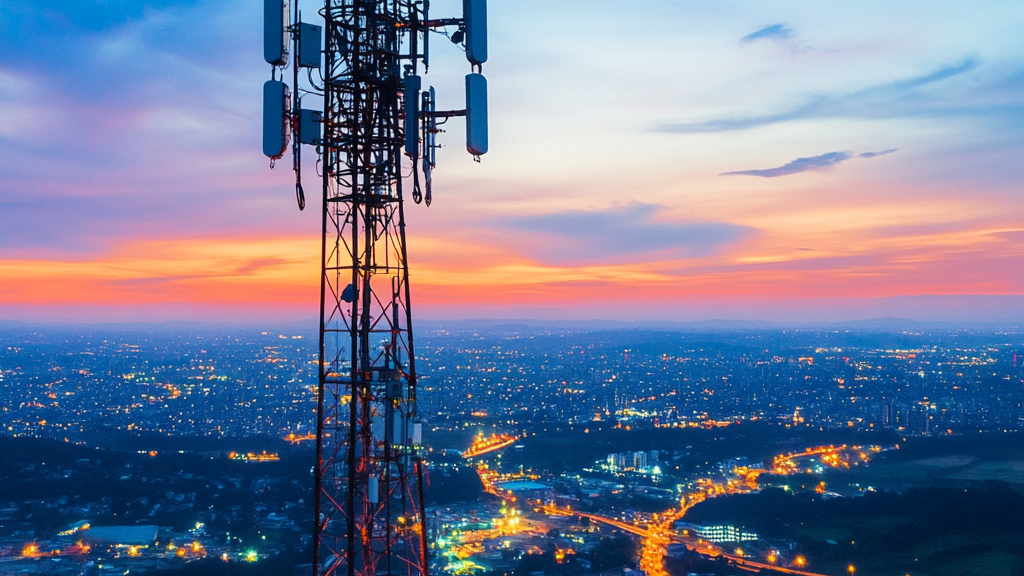For decades, I’ve been following the evolution of the telecom industry—tracking changes in wireless, broadband, pay TV, and more. But today, we’re witnessing something truly transformative. Artificial intelligence and 5G wireless—both key parts of the telecom world—are coming together to create smart, self-optimizing networks. These networks are not just changing telecom; they’re revolutionizing industries like healthcare, retail, and beyond.
Innovation has always been the driving force behind change in every industry, but now, with technologies like AI, that pace is speeding up. We’re seeing different kinds of AI emerge, just as 5G and wireless networks have already reshaped the way we live and work. And now, these two powerful forces are converging—and the impact is going to be massive.
It’s important to understand how AI and 5G are coming together and what this means for customers, workers, investors, and executives alike. As we step into this new era of rapid change, keeping up is going to be crucial.
Let’s take a step back and look at the bigger picture—at the forces that are rewriting everything around us—and why it’s so important for companies to act fast to stay ahead.
AI, 5G, Wireless, and Telecom: A Powerful Mix
The combination of AI, 5G, wireless, and telecom is already starting to transform industries, but what does this all really mean? What changes are happening now, and what can we expect in the future?
AI has been around in different forms for decades, but it’s been moving faster than ever in the past couple of years—thanks to advancements like OpenAI’s ChatGPT and other generative AI technologies.
It’s important to remember that AI isn’t just one thing. It’s a broad term that covers many different kinds of technology. And this is where things can get a little confusing.
Think of AI as an umbrella term. Under it, you’ll find different types, such as Narrow AI (which focuses on specific tasks), the still-theoretical General AI (which would have more human-like intelligence), and the future idea of Super AI (intelligence that surpasses human ability). Right now, most of the buzz is around Narrow AI, which includes cool tools like ChatGPT and other forms of Generative AI—these are rapidly changing the way businesses and consumers interact.
AI’s Growing Impact Across Connectivity Sectors
AI isn’t just one technology—it’s a broad field made up of many different types, each affecting industries and companies in unique ways.
Understanding these differences is key because AI is changing fast and shaking up the rules across every sector it touches.
Some companies are jumping in early to integrate AI, gaining a first-to-market advantage. Others are taking a more cautious “wait-and-see” approach, positioning themselves as fast followers—ready to step in once the industry’s direction becomes clearer. Both strategies can work, but they’re two very different paths to success.
We’ve seen a similar pattern in the wireless industry. Take AT&T, for example. They’re often the first to roll out new technologies—sometimes they get it right, sometimes not. On the other hand, Verizon tends to wait until the path is clearer and often succeeds as a fast follower.
AI Is Driving New Growth Opportunities
Artificial intelligence is opening up exciting new possibilities for companies to turn things around and boost growth.
AI is already making a big impact on network operations in wireless, telecom, and broadband. In the past, service disruptions meant scrambling to find and fix the problem before customers even noticed. Now, AI can spot potential issues early, automatically reroute traffic, and keep everything running smoothly—often without anyone noticing a thing.
This isn’t just a technical upgrade; it’s a competitive edge. Companies that embrace AI in their operations can deliver better service, enhance customer satisfaction, and set themselves up for fresh growth.
While we’re still early in the AI revolution, the companies that jump in first will be in a prime position to shape the next big phase of industry change.

Leaders Emerging in the AI and 5G Race
The race to lead in the world of AI and 5G is already heating up—and it’s getting pretty crowded.
Big names in telecom like AT&T, T-Mobile, Verizon, and Comcast are all working hard to integrate AI and 5G into their networks. Meanwhile, infrastructure giants like Cisco, Nokia, Ericsson, and Qualcomm are building the tech foundations to support these changes. On top of that, device makers like Apple, Google, Samsung, and Netgear are adding AI features to their products, helping drive consumer adoption.
As the landscape continues to evolve, we’ll see a variety of strategies. Some companies will stay independent, while others may form partnerships or even merge to strengthen their positions.
Even smaller players aren’t sitting on the sidelines—they’re jumping in with innovative, AI-powered solutions. For example, RedChip recently launched RedChat, an AI-driven investment service designed to help investors pick small-cap stocks. This is a great example of how AI is creating new growth opportunities across all kinds of industries, not just telecom and wireless.
In this fast-changing world, it won’t just be about size. The next wave of winners will be defined by how quickly they adapt, how innovative they are, and how well they execute their strategies.


